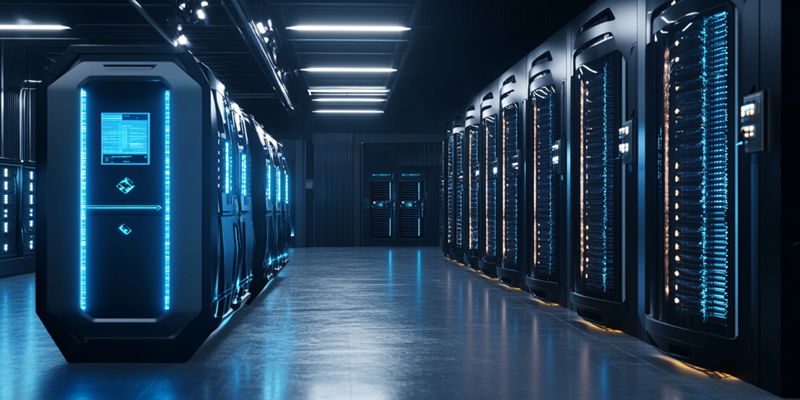ECL has made a groundbreaking stride in the field of renewable energy and data center operations by securing a 300-acre site in Texas to establish a 1GW off-grid, hydrogen-powered AI factory named TerraSite1. Located near Houston, the TerraSite1 project is designed not only to host data centers but also to house AI experts, researchers, data scientists, and engineers dedicated to developing innovative AI solutions. This ambitious initiative marks a significant evolution in the intersection between hydrogen energy and data center activities, promising to elevate both environmental responsibility and operational efficiency. By utilizing hydrogen fuel supplied through three nearby pipelines, ECL negates the need for additional fuel transport logistics, thereby streamlining its sustainable framework.
The Confluence of Hydrogen Energy and Data Center Operations
Hydrogen energy’s application in data center operations is an emerging trend that addresses escalating global energy consumption and greenhouse gas emissions associated with the industry. Data centers and data transmission networks currently consume between 1% and 1.5% of the world’s electricity and contribute to 1% of global greenhouse gas emissions, as of 2023. By creating a microgrid system exclusively powered by hydrogen, ECL is making a bold statement about its commitment to combating climate change. The environmental benefits of this project go beyond merely reducing greenhouse gas emissions. The deployment of hydrogen energy serves as a scalable and reliable power source, effectively demonstrating how sustainable practices can be integrated within industrial frameworks.
ECL’s transition to hydrogen-powered operations not only sets a new standard for sustainability but also highlights the practical scalability of such a solution. The firm’s CEO, Yuval Bachar, asserts that to be competitive with larger, conventional 250-400MW data centers, scalability is a crucial factor. This necessity has driven ECL to adopt an architectural strategy that uses modular 1MW blocks which can be scaled out rather than scaled up. This flexibility ensures the project can grow in harmony with both current demands and future expansions while maintaining an environmentally responsible footprint. This innovative model not only meets the growing demand for data processing but does so in a manner that prioritizes ecological stewardship.
Investment and Expected Returns
The economic dimensions of ECL’s TerraSite1 project are as revolutionary as its environmental aspects. The first phase of the project, estimated at a whopping $450 million, is expected to go online in 2025 with an initial 50MW capacity. Prominent companies like Oracle, Lambda, and Cato Digital have already committed to utilizing this capacity, underscoring the commercial viability and immediate demand for such sustainable solutions. The overall project is projected to be worth around $8 billion and will be funded by future tenants’ commitments, a testament to the confidence stakeholders have in this enterprise.
Funding and scalability are paired harmoniously in ECL’s approach. The method of scaling out through modular 1MW blocks exemplifies how ECL plans to balance economic expansion with sustainability goals. Each modular unit allows for incremental investment and growth, reducing the financial risks typically associated with large-scale infrastructure projects. This phased investment approach allows ECL to assess the environmental impact and operational efficiency at each stage, making real-time adjustments as needed. Such a model could serve as a blueprint for other companies seeking to adopt sustainable practices while remaining financially viable.
The Future of Hydrogen in Technology Infrastructure
The economic scope of ECL’s TerraSite1 project is as groundbreaking as its environmental impact. The initial phase, pegged at an astounding $450 million, is slated to go live in 2025 with a starting capacity of 50MW. Major players like Oracle, Lambda, and Cato Digital have already pledged to utilize this capacity, highlighting the project’s commercial relevance and the immediate demand for sustainable solutions. The total project value is estimated at around $8 billion, funded by future tenants’ commitments, reflecting the stakeholders’ confidence in the venture.
ECL’s strategy artfully pairs funding with scalability. By expanding through modular 1MW blocks, ECL balances financial growth with sustainability objectives. Each modular unit allows for step-by-step investment and development, minimizing the financial risks usually linked with large-scale projects. This phased investment strategy enables ECL to evaluate environmental impacts and operational efficiency at each stage, allowing for real-time adjustments. This model could become a template for other firms aiming to integrate sustainability with economic viability.

